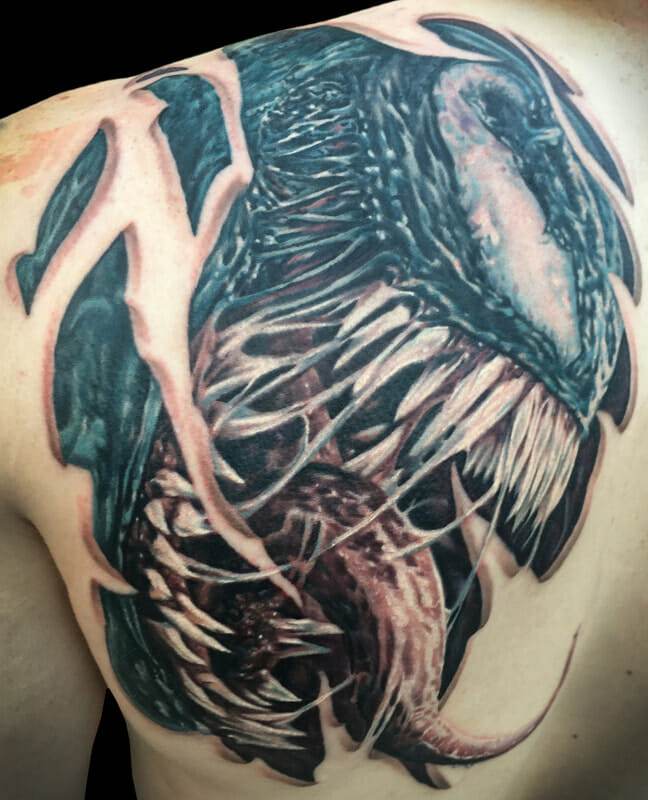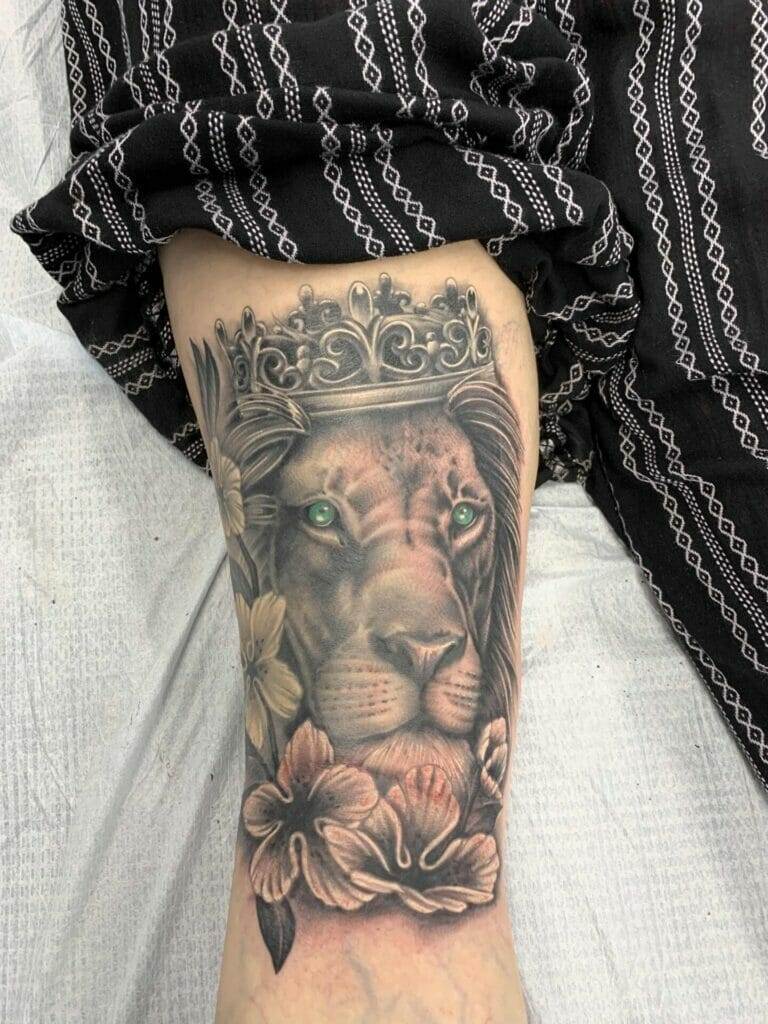Tattooing has always been an ancient form of body art that has held a significant place in various cultures around the world. It is a permanent design or symbol that is etched on the skin, often carrying deep personal and cultural meanings. Over the years, the art of tattooing has evolved, and people from all walks of life have embraced it as a form of self-expression and personal style statement.
Embracing the Art of Tattooing
Tattooing is not just about getting a design inked on your skin; it is an art form that requires skill, creativity, and knowledge. Professional tattoo artists spend years honing their craft and mastering various techniques to create beautiful and intricate designs. From traditional designs to contemporary ones, tattooing offers a wide range of artistic possibilities.
Importance of Exploring your Skin’s Story
Each person has a unique story, and tattooing can be a powerful way to express and explore that story. Tattooing allows individuals to commemorate significant moments, honor loved ones, or convey their values and beliefs. It is a form of self-expression that can be deeply personal and meaningful.
By embracing the art of tattooing and exploring your skin’s story, you are not only enhancing your body’s aesthetics but also connecting with your innermost emotions and experiences. It allows you to wear your story proudly and serves as a constant reminder of the journey you have taken.
Tattooing is an art form that has stood the test of time and continues to evolve. It offers a unique and meaningful way to express oneself and explore personal stories. Whether you are considering your first tattoo or adding to your existing collection, embracing the art of tattooing can be a transformative experience. So, go ahead, delve into the mesmerizing world of tattooing, and let your skin tell your unique story.
Choosing the Right Design
Reflecting on Personal Meaning
When choosing a tattoo design, it is important to take the time to reflect on its personal meaning. Each individual has a unique story and experiences that can be symbolized through a tattoo. Consider what aspects of your life are significant to you and how you want to express them through your tattoo. It could be a representation of a loved one, a personal mantra, or a symbol that holds deep cultural or spiritual meaning.
Exploring Different Tattoo Styles

The world of tattooing offers a wide range of artistic possibilities in terms of styles. From traditional designs to contemporary ones, there is something for everyone. Take the time to explore different tattoo styles and find one that resonates with you. Some popular styles include classic black and grey tattoos, vibrant and colorful watercolor tattoos, minimalistic line work, and intricate dotwork tattoos. Each style has its own unique aesthetic, so it’s worth researching and finding one that suits your personal style and preferences.
By considering the personal meaning behind the tattoo and exploring different styles, you can ensure that you choose a design that truly reflects who you are. Remember, a tattoo is a permanent art form, so take your time and make an informed decision that you will be proud to wear for a lifetime.
Preparing for the Tattoo Experience
Understanding the Process and Aftercare
Before getting a tattoo, it is essential to understand the process and aftercare involved. Tattoos are created by injecting ink into the second layer of the skin using a needle. This process can be uncomfortable, but many people find the pain bearable. It’s crucial to choose a reputable tattoo artist who follows strict hygiene practices to ensure your safety.
After getting a tattoo, proper aftercare is essential for the healing process. The tattoo area should be kept clean and moisturized, and it’s crucial to follow any specific aftercare instructions provided by your tattoo artist. This includes avoiding direct sunlight, swimming, and scratching the tattooed area until it’s fully healed. Patience and diligence in caring for your tattoo will result in a vibrant and long-lasting design.
Choosing the Right Placement
The placement of your tattoo is as important as the design itself. Consider factors such as visibility, pain tolerance, and future career prospects when choosing the location. Some popular tattoo placements include the forearm, upper arm, back, and thigh. These areas offer a relatively large canvas to showcase your design.
It’s also essential to consider how your tattoo will look as you age and if it will still hold meaning to you in the future. While some people opt for more discreet placements, others prefer visible areas to proudly display their tattoos. Ultimately, the right placement is a personal choice that should align with your intentions and preferences.
By understanding the tattoo process and aftercare, as well as carefully choosing the placement, you can ensure a positive and meaningful tattoo experience. Remember to communicate your ideas clearly with your tattoo artist and trust their expertise in bringing your design to life.
Quality vs. Affordability: The Importance of Investing
Whether you are getting your first tattoo or adding to your existing collection, investing in quality work should be a priority. While affordability is tempting, it is essential to understand the importance of choosing a skilled and experienced tattoo artist.
| Quality Work | Affordable Option |
|---|---|
| Skilled and experienced tattoo artist | Potential lack of experience or expertise |
| High-quality ink and equipment | Potential use of low-quality materials |
| Attention to detail and precision | Possible rushed or sloppy work |
| Long-lasting and vibrant tattoo | Increased risk of fading or poor longevity |
When considering the investment, remember that a tattoo is a permanent piece of art on your body. Choosing a capable artist ensures a level of craftsmanship that will leave you satisfied for years to come.
Taking the Time to Design and Execute

Designing a tattoo that perfectly captures your vision requires time and thoughtful consideration. Take the opportunity to thoroughly research styles, symbols, and even seek inspiration from other artists. Collaborating with your chosen tattoo artist will be crucial in creating a design that aligns with your vision and their expertise.
When executing the design, the artist’s attention to detail is vital. Every line, shading, and color choice should be intentional and contribute to the overall aesthetic. By taking the time to design and execute the tattoo diligently, you can ensure a truly unique and meaningful piece of body art.
Remember, getting a tattoo is a personal and permanent decision. By investing in quality work, carefully choosing the design, and working closely with your tattoo artist, you can create a lasting impression that reflects your individuality and tells your story.
Embracing the Healing Process
Caring for Your Fresh Tattoo
Before getting a tattoo, it is important to have a clear understanding of the process and necessary aftercare. The tattooing process involves injecting ink into the second layer of the skin using a needle, and while it can be uncomfortable, most people find the pain bearable. To ensure safety, it is crucial to select a reputable tattoo artist who strictly adheres to hygiene practices.
Proper aftercare is vital for the healing process after receiving a tattoo. This includes keeping the tattooed area clean and moisturized, following any specific instructions provided by the tattoo artist. It is important to avoid direct sunlight, swimming, and scratching the tattoo until it is completely healed. By practicing patience and diligence in caring for the tattoo, you can ensure a vibrant and enduring design.
Choosing the right placement of a tattoo is equally significant. Factors such as visibility, pain tolerance, and future career prospects should be considered when selecting a location. Popular choices include the forearm, upper arm, back, and thigh, as they offer a larger canvas for showcasing the design. It is also important to contemplate how the tattoo will age and if it will maintain its meaning in the future.
By understanding the tattoo process, aftercare requirements, and carefully considering the placement, individuals can ensure a positive and meaningful tattoo experience. Clear communication with the tattoo artist about ideas is crucial, as they possess the expertise to bring the design to life.
Tattoo aftercare: Do’s and Don’ts
Keeping Your Tattoo Clean and Moisturized
Once you have received your fresh tattoo, it is important to take proper care to ensure its proper healing. Here are some essential do’s and don’ts to follow:
Do:
- Keep your tattoo clean by washing it gently with mild soap and warm water.
- Pat the tattoo dry with a clean towel or let it air dry. Avoid rubbing the area.
- Apply a thin layer of fragrance-free and alcohol-free moisturizer to keep the tattoo hydrated.
- Cover your tattoo with clean, breathable clothing to protect it from dirt and bacteria.
- Follow any specific aftercare instructions provided by your tattoo artist.
Don’t:
- Scratch or pick at your tattoo, as this can disrupt the healing process and lead to infections.
- Expose your tattoo to direct sunlight, as it can fade the ink and damage the healing skin.
- Submerge your tattoo in water, such as swimming pools, hot tubs, or baths, until it is fully healed.
- Wear tight or restrictive clothing that may rub against the tattoo and cause irritation.
- Use harsh chemicals, exfoliants, or products containing alcohol on your tattoo.
By following these do’s and don’ts, you can help ensure a successful healing process for your tattoo. Remember to consult with your tattoo artist if you have any specific concerns or questions about aftercare.



